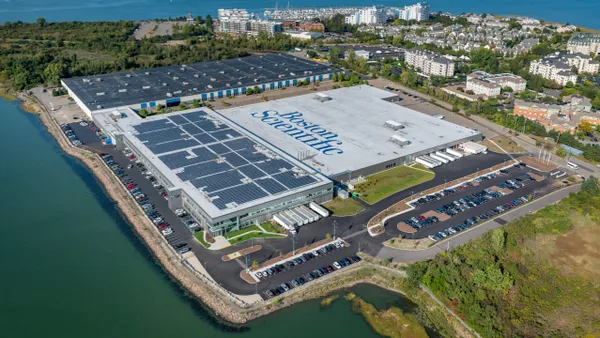FDA has closed out the summer with another batch of breakthrough device designations, including awards of regulatory privileges to products used in the treatment and detection of cancers. The designation gives sponsors potentially speedier review from regulators for products for hard-to-treat conditions or those with few options.
Novocure picked up the breakthrough status for the cancer treatment device when FDA decided its NovoTTF-200T System gave the designation aimed at first-line treatment of patients with unresectable or metastatic liver cancer. The designation covers the use of the device, which emits electric fields to disrupt cancer cell division, in combination with Roche's oncology drugs Avastin and Tecentriq.
FDA awarded the designation to NovoTTF-200T shortly after Novocure presented data on the use of the device in combination with Bayer's Nexavar in liver cancer patients. The objective response rate in the single-arm trial compared favorably to previous studies of Nexavar as a monotherapy. With the Avastin-Tecentriq combination outperforming Nexavar in another study, Novocure is now switching its focus to using NovoTTF-200T to enhance the cocktail of Roche drugs in a randomized trial.
CellMax Life received the breakthrough status for the cancer test. FDA awarded the designation to CellMax's FirstSight pre-cancer and cancer detection blood test. FirstSight is a liquid biopsy designed to measure epithelial cells and DNA markers associated with uncontrolled, abnormal growth of colorectal cells and thereby detect signs of cancer in blood samples.
California-based CellMax presented data on the test, raised money and entered into a development and commercialization partnership earlier this year. CellMax is now working to optimize its algorithm before moving into a pivotal clinical trial.
Other recent recipients of FDA breakthrough device designations include Endosound. FDA granted breakthrough status to the EndoSound Vision System, an add-on device for flexible upper gastrointestinal video endoscopes. Adding the device to an endoscope creates an endoscopic ultrasound system capable of performing procedures such as fine needle biopsies without the elevator mechanism linked to the risk of infection.
ImpediMed received breakthrough status for a device for measuring the volume of fluid to remove from renal failure patients during dialysis. The device uses bioimpedance spectroscopy to measure body water. ImpediMed is pitching the approach as more accurate than the current method, which uses weight scales that cannot account for muscle loss. Removing too much or too little fluid can have negative health outcomes such as low blood pressure.
FDA granted breakthrough status to Madorra for its non-invasive, home-use treatment for a subset of women with moderate-to-severe vulvovaginal atrophy. The handheld device delivers ultrasound along the vaginal canal to stimulate heat and blood flow. If the device works as hoped, it will drive the production of vaginal lubrication to alleviate the symptoms of the condition. Madorra has shared data from a small clinical trial with FDA and is preparing for a pivotal study.
Auctus Surgical secured the FDA designation for its treatment for pediatric scoliosis, a condition defined by the twisting of the spine. The vertebral body tethering approach in development is designed to address scoliosis without fusing, and thereby limiting movement of, the spine.
Finally, FDA approved MicroTransponder's breakthrough-designated stroke rehabilitation system. The device consists of an implantable pulse generator that stimulates the vagus nerve to improve the effectiveness of rehabilitation therapy. MicroTransponder plans to make the device available in parts of the U.S. by the end of the year, before expanding nationally in 2022.










